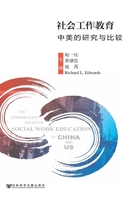
六 讨论与结论
稳定的家庭关系如婚姻或者同居对孩子以及家庭的福祉是十分重要的。但是这种关系在父亲有暴力倾向或者违背社会道德的行为时,就可能不再是有利的因素(Jaffee,Moffitt,Caspi,& Taylor,2003)。在家庭暴力与家庭构成的研究中,大多数的重点都放在肢体虐待的影响上。本文研究了经济与肢体虐待的发生以及虐待程度的变化对家庭构成的影响。
双变量的分析结果显示,经济和肢体上的虐待的比例逐年上涨。大约1/9的母亲表示在第一年曾受到过经济虐待,而在第五年这个数字上升到了1/7。相同的,1/25的母亲在第一年受到了肢体虐待,而这个数字在第五年则上涨到了1/13。同时,大多数母亲表示其被虐待的程度在被调查期间并没有变化。但9%的母亲表示她们受到了更严重的经济虐待,5%的母亲表示她们受到了更严重的肢体虐待。所以经济和肢体虐待的逐年增长是不能忽视的,特别是经济虐待。
对于第五年的家庭构成来说,大多数在第一年已婚的母亲在第五年仍保持已婚状态。但1/7的母亲与父亲不再有关系。相反的,那些曾在第一年处在探访及同居状态的父母间的关系,在五年中产生了巨大的变化。超过一半的探访与同居母亲在五年内与父亲的关系发生了变化。大约30%的同居母亲与她们的伴侣分手,24%与之结婚。这个趋势在探访母亲中也很明显。其中,47%与伴侣分手,37%则进入了更稳定的关系(24%同居,13%结婚)。
回归分析的结果显示,经济虐待的发生以及程度的加深都对第五年双方结婚或同居的概率有显著的负面影响。这个发现与另一个结论相悖,经济虐待会使施虐者取得控制受虐者的权利,并且减弱受虐者离开这个关系的能力(Stark,2007;Vyas,2008)。另外一个理论认为,经济虐待使被虐待者不再信任施虐者,并且认为他们并不是合适的伴侣,这一理论与本文的发现更为相近。与以往文献(Carlson et al.,2004;Högnaäs & Carlson,2010)一致的是,回归结果显示第一年的肢体虐待对双方第五年的家庭构成并没有显著的影响。但是肢体虐待程度的加深对双方关系却有显著的负面影响。如同对经济虐待的发现一样,至少从家庭构成这方面来讲,这些理论支持施虐者并不能通过虐待来控制受虐者的观点。这些发现对于政策制定有着重要的意义。由于经济虐待与肢体虐待对家庭构成有着显著的负面影响,任何鼓励低收入女性结婚的政策都应对这两种虐待的产生和变化投入更多关注。社会服务项目应细心地设计对妇女经济虐待与肢体虐待的检测渠道,一旦虐待发生,介入工作就应及时为受害者提供服务。由于减少伴侣之间的暴力能够有效促进及稳定伴侣之间的关系,想要做好促进婚姻关系的相关项目,就需要努力改变有虐待倾向的丈夫或男性伴侣。
参考文献
Adams,A.E.,Sullivan,C.M.,Bybee,D.,& Greeson,M.R. 2008. “Development of the Scale of Economic Abuse.” Violence Against Women 14(5):563-588.
Amato,P.R. 2005. “The Impact of Family Formation Change on the Cognitive,Social,and Emotional Well-being of the Next Generation.” The Future of Children 15(2):75-96.
Brown,S.L. 2010. “Marriage and Child Well-Being:Research and Policy Perspectives.” Journal of Marriage and Family 72,5:1059-1077.
Cano,A.,& Vivian,D. 2003. “Are Life Stressors Associated with Marital Violence?” Journal of Family Psychology 17:302-314.
Carlson,M.J.,McLanahan,S.,& England,P. 2004. “Union Formation in Fragile Families.” Demography 41:237-261.
Catlett,B.S. & Artis,J.E. 2004. “Critiquing the Case for Marriage Promotion:How the Promarriage Movement Misrepresents Domestic Violence Research.” Violence Against Women 10(11):1226-1244.
Chronister,K.M.,& McWhirter,E.H. 2006. “An Experimental Examination of Two Career Interventions for Battered Women.” Journal of Counseling Psychology 53(2):151-164.
DeMaris,A. 2000. “Till Discord Do Us Part:The Role of Physical and Verbal Conflict in Union Disruption.” Journal of Marriage and the Family 62:683-692.
Fawole,O.I. 2008. “Economic Violence to Women and Girls:Is It Receiving the Necessary Attention?” Trauma Violence Abuse 9(3):167-177.
Finlay,K. & D.Neumark. 2010. “Is Marriage Always Good for Children?:Evidence from Families Affected by Incarceration.” Journal of Human Resources 45:1046-1088.
Frias,S.M.,& Angel,R.J. 2007. “Stability and Change in the Experience of Partner Violence Among Low-income Women.” Social Science Quarterly,88(5):1281-1306.
GAO. 1999. Domestic Violence:Prevalence and Implications for Employment Among Welfare Recipients(No.HEHS-99-12). Washington:U.S. General Accounting Office.
Högnäs,R.S.,& M.J.Carlson. 2010. “Intergenerational Relationships and Union Stability in Fragile Families.” Journal of Marriage and Family 72(5):1220-1233.
Honeycutt,T.C.,Marshall,L.L.,& Rebecca,W. 2001. “Toward Ethnically Specific Models of Employment,Public Assistance,and Victimization.” Violence Against Women 7(2):126-140.
Hotaling,G.T.,& Sugarman,D.B. 1990. “A Risk Marker Analysis of Assaulted Wives.” Journal of Family Violence 5:1-13.
Huang,C.,Son,E.,& Wang,L.R. 2010. “Prevalence and Factors of Domestic Violence Among Unmarried Mothers with a Young Child.” Families in Society 91(2):171-177.
Jaffee,S.R.,Moffitt,T.E.,Caspi,A.,& Taylor,A. 2003. “Life with(or without)Father:The Benefits of Living with Two Biological Parents Depend on the Father’s Antisocial Behavior.” Child Development 74:109-126.
Kenney,C.T.,& McLanahan,S.S. 2006. “Why are Cohabiting Relationships More Violent Than Marriage?” Demography 43(1):127-140.
Kurz,D. 1996. “Separation,Divorce,and Woman Abuse.” Violence Against Women 2:63-81.
Levendosky,A.A.,Leahy,K.L.,Bogat,G.A.,Davidson,W.S.,& von Eye,A. 2006. “Domestic Violence,Maternal Parenting,Maternal Mental Health & Infant Externalizing Behavior.” Journal of Family Psychology 20(4):544-552.
Lindhorst,T.,Oxford,M.,& Gillmore,M.R. 2007. “Longitudinal Effects of Domestic Violence on Employment and Welfare Outcomes.” Journal of Interpersonal Violence 22(7):812-828.
Manning,W.D.,Trella,D.,Lyons,H.,& N.DuToit. 2010. “Marriageable Women:A Focus on Participants in a Community Healthy Marriage Program.” Family Relations 59,1:87-102.
McMahon,S.,Huang,C.C.,Boxer,P.,& Postmus,J.L. 2011. “The Impact of Emotional and Physical Violence During Pregnancy on Maternal and Child Health at One Year Post-partum.” Children & Youth Services Review 33:2103-2111.
Meisel,J.,Chandler,D.,& Rienzi,B.M. 2003. “Domestic Violence Prevalence and Effects on Employment in Two California TANF populations.” Violence Against Women 9(10):1191-1212.
Osborne,C.,Manning,W.D.,& P.J.Smock. 2007. “Married and Cohabiting Parents’ Relationship Stability:A Focus on Race and Ethnicity.” Journal of Marriage and Family 69(5):1345-1366.
Panchanadeswaran,S.,& McCloskey,L.A. 2007. “Predicting the Timing of Women’s Departure from Abusive Relationships.” Journal of Interpersonal Violence 22(1):50-65.
Postmus,J.L.,Plummer,S.,McMahon,S.,Murshid,N. & Kim,M. 2012. “Understanding Economic Abuse in the Lives of Survivors.” Journal of Interpersonal Violence 27(3):411-430.
Sable,M.R.,Libbus,M.K.,Huneke,D.,& Anger,K. 1999. “Domestic Violence among AFDC Recipients:Implications for Welfare-to-work Programs.” Affilia 14(2):199-216.
Shepard,M.,& Pence,E. 1988. “The Effect of Battering on the Employment Status of Women.” Affilia 3(2):55-61.
Stark,E. 2007. Coercive Control:How Men Entrap Women in Personal Life. New York:Oxford University Press.
Stith,S.M.,Green,N.,Smith,D.B.,& Ward,D. 2008. “Marital Satisfaction and Discord As Risk Markers for Intimate Partner Violence:A Meta-analytical Review.” Journal of Family Violence 23:149-160.
Tjaden,P.,& Thoennes,N. 1998. Prevalence,Incidence,and Consequences of Violence Against Women:Findings from the National Violence Against Women Survey. Washington:National Institute of Justice.
Tolman,R.M.,& Raphael,J. 2000. “A Review of Research on Welfare and Domestic Violence.” Journal of Social Issues 56:655-682.
Tolman,R.,M.,& Rosen,D. 2001. “Domestic Violence in the Lives of Women Receiving Welfare;Mental Health,Substance Dependence,and Economic Well-being.” Violence Against women 7:141-158.
U.S. Department of Health and Human Services. 2006. “Welfare Reform Reauthorized:Healthy Marriage,Fatherhood Initiative Approved;Work Requirement Strengthened.” News Release,February 8. U.S. Department of Health and Human Services,Washington,D.C. http://www.dhhs.gov/news/press/2006pres/20060208.html.
Vyas,S.W.,C. 2008. “How Does Economic Empowerment Affect Women’s Risk of Intimate Partner Violence in Low and Middle Income Countries?A Systematic Review of Published Evidence.” Journal of International Development 21(5):25.
[1] 黄建忠,美国罗格斯大学社会工作学院副教授;Judy L.Postmus,美国罗格斯大学社会工作学院副教授;Juliann H.Vikse,美国罗格斯大学社会工作学院华民研究中心研究员。本文翻译者为美国罗格斯大学公共政策学院硕士生张璋。